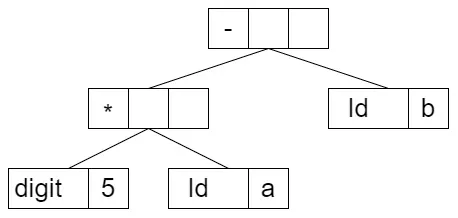
Learn Bosque Programming
Boost your productivity and software reliability with Microsoft's new open-source programming language
- 336 pages
- English
- ePUB (mobile friendly)
- Available on iOS & Android
Learn Bosque Programming
Boost your productivity and software reliability with Microsoft's new open-source programming language
About this book
Discover the benefits of regularized programming by implementing Bosque to build a variety of reliable apps
Key Features
- Get up and running with the Bosque programming language and use it to build better software
- Streamline your app development and improve productivity using Bosque programming
- Eliminate sources of complexity such as loops, recursion, and invariants to develop quality products
Book Description
Bosque is a new high-level programming language inspired by the impact of structured programming in the 1970s. It adopts the TypeScript syntax and ML semantics and is designed for writing code that is easy to reason about for humans and machines. With this book, you'll understand how Bosque supports high productivity and cloud-first development by removing sources of accidental complexity and introducing novel features.
This short book covers all the language features that you need to know to work with Bosque programming. You'll learn about basic data types, variables, functions, operators, statements, and expressions in Bosque and become familiar with advanced features such as typed strings, bulk algebraic data operations, namespace declarations, and concept and entity declarations. This Bosque book provides a complete language reference for learning to program with Bosque and understanding the regularized programming paradigm. You'll also explore real-world examples that will help you to reinforce the knowledge you've acquired. Additionally, you'll discover more advanced topics such as the Bosque project structure and contributing to the project.
By the end of this book, you'll have learned how to configure the Bosque environment and build better and reliable software with this exciting new open-source language.
What you will learn
- Find out what the Bosque project is
- Identify accidental complexity in code and how to overcome it with Bosque
- Understand the principles of the regularized programming paradigm
- Install and configure the Bosque environment
- Get hands-on experience using the Bosque language and its key features
- Recognize the advantages of explicit code intermediate representation design
Who this book is for
This book is for experienced developers and early adopters who are interested in learning a new, mindset-changing programming language. You'll also find this book useful if you know TypeScript or JavaScript programming and want to understand the advantages of Bosque compared to other programming languages. Experience with any programming language and knowledge of various programming paradigms such as structured programming and functional programming are required to get started with this book.
Frequently asked questions
- Essential is ideal for learners and professionals who enjoy exploring a wide range of subjects. Access the Essential Library with 800,000+ trusted titles and best-sellers across business, personal growth, and the humanities. Includes unlimited reading time and Standard Read Aloud voice.
- Complete: Perfect for advanced learners and researchers needing full, unrestricted access. Unlock 1.4M+ books across hundreds of subjects, including academic and specialized titles. The Complete Plan also includes advanced features like Premium Read Aloud and Research Assistant.
Please note we cannot support devices running on iOS 13 and Android 7 or earlier. Learn more about using the app.
Information
Section 1: Introduction
- Chapter 1, Exploring Bosque
- Chapter 2, Configuring the Bosque Environment
- Chapter 3, Bosque Key Features
Chapter 1: Exploring Bosque
- Identifying the need for another language
- Learning what intermediate representation is
- Discovering regularized programming
- Understanding accidental complexity
- How the experiment is going so far
- Bosque applications
Identifying the need for another language
Learning what Intermediate Representation is
- An abstract syntax tree (AST)
- Lineal IR's three-way code or Postfix notation

Table of contents
- Learn Bosque Programming
- Contributors
- Preface
- Section 1: Introduction
- Chapter 1: Exploring Bosque
- Chapter 2: Configuring the Bosque Environment
- Chapter 3: Bosque Key Features
- Section 2: The Bosque Language Overview
- Chapter 4: Entrypoint Function
- Chapter 5: Types and Operators
- Chapter 6: Bosque Statements
- Chapter 7: Project: Bosque in the Cloud
- Section 3: Practicing Bosque
- Chapter 8: Expressions in Bosque
- Chapter 9: Collections
- Chapter 10: Iterative Processing and Recursion
- Chapter 11: Project: AI Classifier
- Section 4: Exploring Advanced Features
- Chapter 12: Namespaces, Concepts, and Entities
- Chapter 13: Testing in Bosque
- Chapter 14: Project: Path Optimizer
- Appendix A: Advanced Topics
- Appendix B: What's Next in Bosque?
- Other Books You May Enjoy